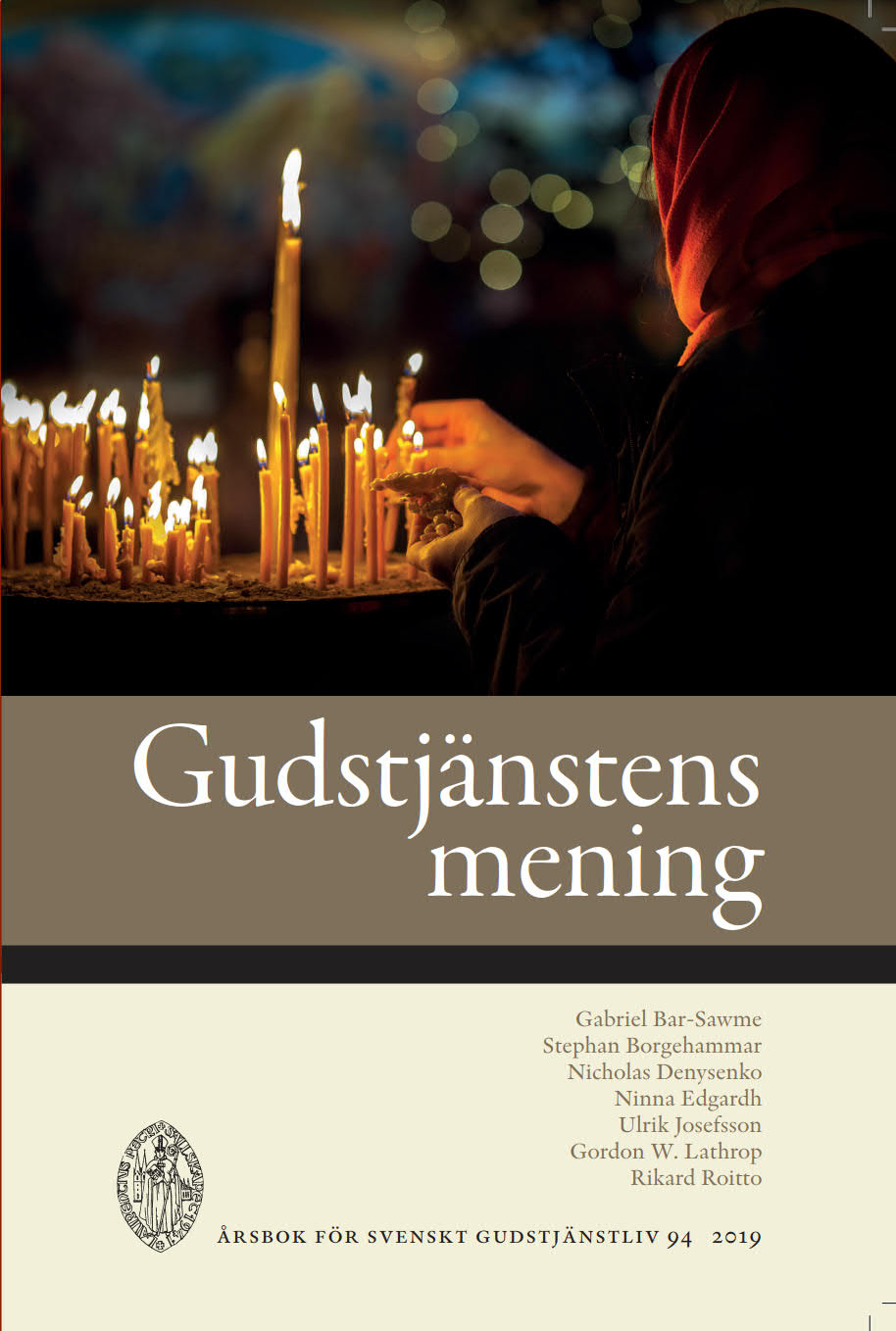The Grammar of the Liturgy in a Nordic Context
Abstract
In ecumenical discussions it has become common to use the term ordo in order to denote basic similarities in the worship of different Christian traditions. Behind this usage lies an employment of the term since the 1960s by theologians and liturgists from different traditions, such as Alexander Schmemann (Orthodox), Aidan Kavanagh (Roman Catholic) and Gordon W. Lathrop (Lutheran). This article reflects on how Gordon Lathrop’s thought has been received in a Swedish and Nordic context.
In 1993–1998 Lathrop participated in consultations on the relation between liturgy and culture arranged by the Lutheran World Federation and the World Council of Churches. He visited Sweden for the first time in 1995 and has since maintained close contacts with the Nordic Lutheran churches.
Lathrop has published a full exposition of his ideas about ordo in the trilogy Holy Things (1993), Holy People (1999) and Holy Ground (2003). Here he presents a basic grammar for Christian liturgy, based on the juxtaposition of four simple elements: bath (baptism), word (reading and interpretation of the Bible), table (celebration of the eucharist) and prayer. He emphasizes the everyday nature of those elements, but also speaks about “broken symbols”, meaning that worship must leave room for paradox and contradiction.
Ordo in Lathrop’s sense is not an “order of worship” but rather a matrix of meaning, a way of understanding how worship can continuously change while remaining faithful to the Gospel. His way of thinking has not fully penetrated ecumenical discussions, where the attempt to discern similarities between different worship traditions tends to create a preoccupation with shared liturgical outlines and elements. However, several Nordic liturgists have been inspired by Lathrop and have tried to develop and apply his ideas in their own contexts.
In the process of revising the Church of Sweden’s Kyrkohandbok (manual of worship) the idea of ordo played a central role right from the start in 2006. The finished manual, approved in 2017 and officially adopted in 2018, sets out a single basic order of worship while leaving many elements optional and providing a broad choice of texts and music. The Church of Norway has adopted a similar solution, as have some of the so-called Free Churches in Sweden.
A drawback of this development is that it tends to reduce ordo to a principle about a basic liturgical structure with optional elements. This misses the point of Lathrop’s vision of an underlying grammar which includes everyday elements, juxtaposition and “breaking”. In a time when liturgical practices tend to become more fragmented and fewer people have a firm grasp of basic Christian teachings, there seems to be a need for continued appropriation of the insights of Lathrop and other liturgical theologians.
Downloads
Published
Issue
Section
License
© the authors, Laurentius Petri Sällskapet för Svenskt Gudstjänstliv and Artos & Norma Bokförlag. Copying and using material from Svenskt Gudstjänstliv for scholarly purposes is permitted as long as the source is indicated. For other uses, please contact the respective author as well as the publisher. Special restrictions may apply to images.


